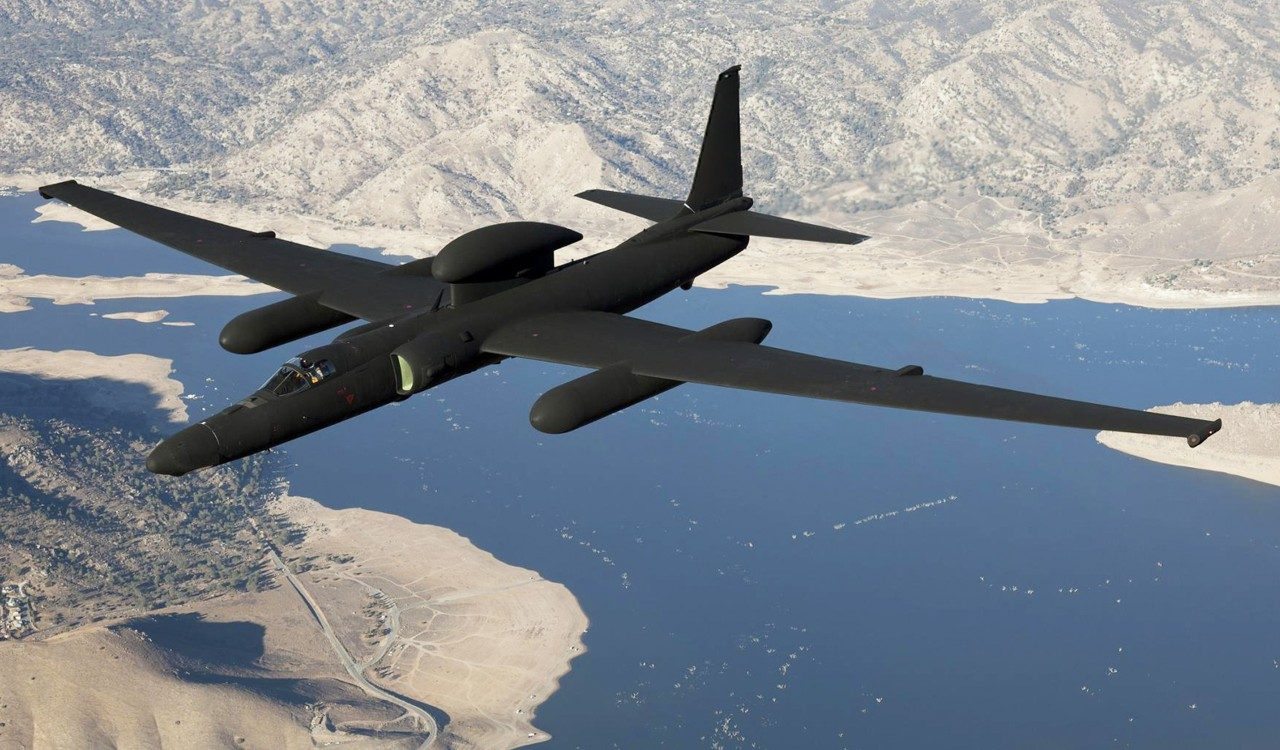The U-2. Dragon Lady. Angel.
Call it what you like, but the Lockheed Martin U-2 is not your typical plane.
Imagined and built by Skunk Works in the early 1950s, the U-2 name has become synonymous with rapid fielding and innovation. Plus, it boasts an iconic legacy as one of the few planes to operate during the Cold War and remain in operation today thanks to a completely new and redesigned airframe built in the 1980s.
Sixty years after its first flight, the U-2’s incredible technological and operational capabilities are enabling missions from natural disaster support to intelligence gathering.
And should the need arise, the team has a pretty good idea about where to take the Dragon Lady next.
What Makes The U-2 Special?
“The U-2 is today’s premiere aerial intelligence platform, by far,” said Scott Winstead, the U-2’s strategic development manager at Lockheed Martin. “There is no other platform that can match its altitude, power and payload capacity. Commanders in the field rely heavily on the U-2 and the U-2’s ability to swap in and out technologies that make it adaptable for whatever the mission may be.”
Winstead should know. He spent 10 years as an Air Force U-2 pilot and Chief of U-2 Operations, as well as another 10 years flying and commanding all combat RQ-4 surveillance vehicles before joining Lockheed Martin.
Today, Winstead and the Skunk Works team are zeroing in on the U-2’s best features to imagine a successor capable of the same precision, only stealthier. Read on to learn how this iconic aircraft’s exceptional capabilities have changed—and may continue to change—the future of flight.
Flying High
With a cruise speed of 475 miles per hour and a wingspan of 103 feet, the Dragon Lady loves to fly. And when it comes to capturing data, flying at a high altitude is essential.
The U-2 has demonstrated that the sweet spot for an ISR platform is 70,000 feet, and today’s U-2 engine, an F118 GE 101, gets the U-2 there. This—combined with long, slender glider-like wings—enables the aircraft to fly at such high altitudes.
“Flying at 70,000-plus feet opens an enormous door for data collection,” said Winstead. “Flying that high means a deeper look across borders and richer data collection, which ultimately leads to better intelligence for our troops and national security decision-makers.”
The U-2 sensors and line-of-sight data links have a better range via the jet's higher perch, which is crucial given the aircraft's mission is standoff surveillance.
While most passenger jets aren’t able to take off in bad weather, such as a lightning storm or hurricane, the U-2 can fly over nearly any inclement weather condition.
How The U-2 Sees The World
From cost per target to data quality and quantity, the U-2 owns the intelligence collection realm hands-down.
The U-2’s engine and wingspan allow it to climb to 60,000 feet in less than 45 minutes, which means long-range intelligence gathering begins almost immediately. To put this in perspective, the average passenger airliner might take around 30 to 40 minutes to reach a cruising altitude of only 35,000 feet.
“Because of the U-2’s superior high-altitude performance over all other air-breathing ISR assets, the sensors are able to collect at remarkable distances,” said Winstead.
U-2 In Support Of Troops
Since 1955, the mission of the U-2 has not changed: provide essential data and information to make informed decisions. If you ask anyone on the U-2 team why they do their jobs, the response is typically the same.
“We do what we do to protect our troops, to keep them as safe as we possibly can.” It’s a responsibility everyone feels, from those on the Programmed Depot Maintenance line and the engineers to the pilots that fly the U-2.
“At Skunk Works, we are compelled to do the best we can to keep our troops safe—it’s just who we are,” said Winstead.
Whether for peacetime missions or during war, the U-2 saves troops’ lives by providing leaders accurate information in near real-time to make informed decisions. The U-2 can detect and collect on targets no other ISR platform can see. Such small bits of unique intelligence are crucial when building a full picture to determine not-so-friendly intent.
When it comes to precise targeting and accurate damage assessment, the U-2 sets the bar—and sets it high.






